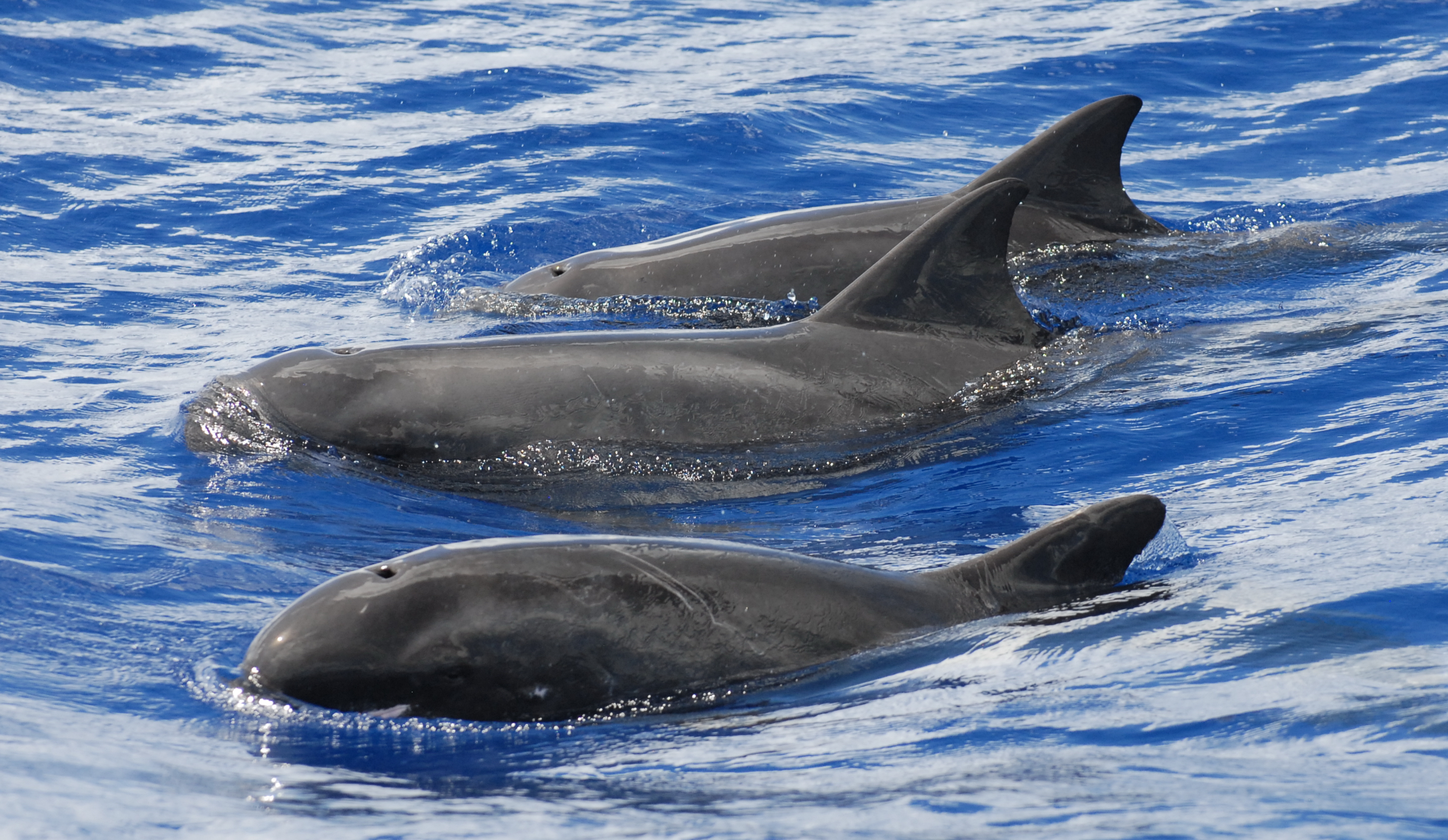
Pygmy killer whale
The pygmy killer whale is a poorly known and rarely seen oceanic dolphin. It is the only member of the genus Feresa. It gets its name because of several similarities between it and the killer whale (or Orca). It is actually the smallest cetacean which includes the word whale in its name. While there have been occasions when it has been extremely aggressive in captivity, this has never been observed in the wild.
First described by John Gray in 1874, this was only on the basis of 2 skulls found in 1827 and 1874. The next recorded sighting was in 1952 which led to its formal naming by Japanese cetologist Munesato Yamada in 1954.
Pygmy killer whales are most often misidentified with melon-headed whales and false killer whales. For instance, a published paper describing an encounter with a school of pygmy killer whales was later determined to be either a mixture of pygmy and false killer whales or solely false killer whales.
The three species can be differentiated by physical differences between them. One defining difference is, although both species have white around the mouth, on pygmy killer whales the white extends back onto the face. Pygmy killer whales also have rounded-tipped dorsal fins, as opposed to pointed tips. When compared to false killer whales, pygmy killer whales have a larger dorsal fin. Finally, pygmy killer whales have a more clearly defined line where the dark dorsal colour changes to the lighter lateral colour than either of the other two species.
Behavioural differences can also be used to differentiate pygmy killer whales from false killer whales. Pygmy killer whales usually move slowly when at the surface whereas false killer whales are highly energetic. Pygmy killer whales rarely bow ride but it is common in false killer whales.
The small size of this species also causes confusion with other dolphins especially where the frontal head shape of the animals encountered remains unseen. Unlike the melon-headed whale, pygmy killer whales do not normally lift the full face above the water as they surface to breathe so it is not easy to confirm the lack of a bottle. Furthermore, in calmer waters the small bow wave pushed in front of the face looks like a bottle from a distance.
Found in all the world tropical and subtropical oceans, the only ocean with even a rough estimate is the eastern tropical pacific ocean, with an estimate of just short of 40,000 however, this is an estimate and therefore could be way out.
In terms of conservation status, they are least concern (according to the IUCN). Around Sri Lanka they make up around 4% of the by-catch in drift gill nets (one would think that these nets should be banned, or at least a change needs to be found). They can host a variety of parasites, and they are prone to mass strandings, though it is not yet clear why these occur.
Below is a video, below that is a list of anywhere they have (or perhaps will be mentioned in the future). Below that, we will list any contacts that will help you try to see this illusive animal.










